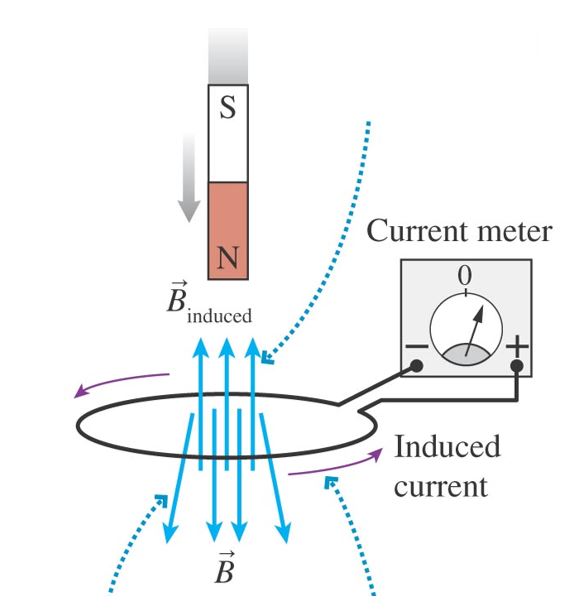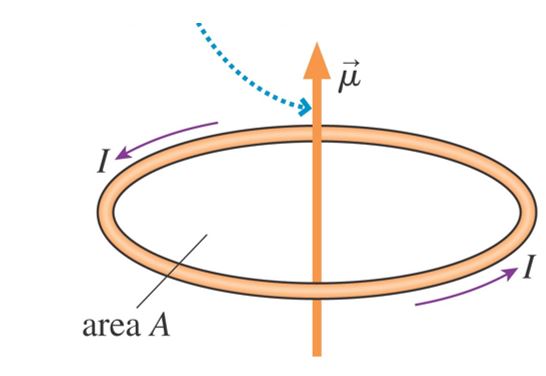Lenz's law

Faraday’s law of induction states that a changing magnetic flux induces an electromotive force,
which creates a current in a wire.

A bar magnet is pushed downward toward a conducting loop.
The downward magnetic flux increases as the magnet approaches.
The loop generates an upward pointing magnetic field to oppose the change in the field.
The bar magnet pushed toward the wire loop induces a current in the loop.
In this case, by the right hand rule, a counterclockwise current is needed to create an upward magnetic field
to oppose the change in the magnetic flux.

An induced current is created by a changing magnetic flux.
The direction of the induced current depends on the direction of the magnetic field, and whether it is increasing or decreasing.
The current loop can be thought of as a magnet with the direction of the magnetic field given by the magnetic moment.
The induced magnetic moment of the loop works to keep the magnetic field from changing
Sample questions
1. What is the direction of the induced current?
A. clockwise
B. coumterclockwise
C. there is no current induced
2. What is the direction of the induced current?
A. clockwise
B. coumterclockwise
C. there is no current induced
3. What is the direction of the induced current?
A. clockwise
B. coumterclockwise
C. there is no current induced
4. What is the direction of the induced current?
A. clockwise
B. coumterclockwise
C. there is no current induced
5. What is the direction of the induced current?
A. clockwise
B. coumterclockwise
C. there is no current induced
6. What is the direction of the induced current?
A. clockwise
B. coumterclockwise
C. there is no current induced
7. A current-carrying wire moves away from a conducting loop at a constant speed. What is the direction of the induced current?
A. clockwise
B. coumterclockwise
C. there is no current induced